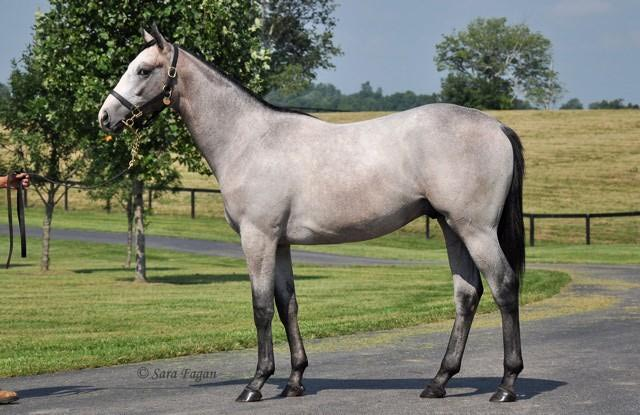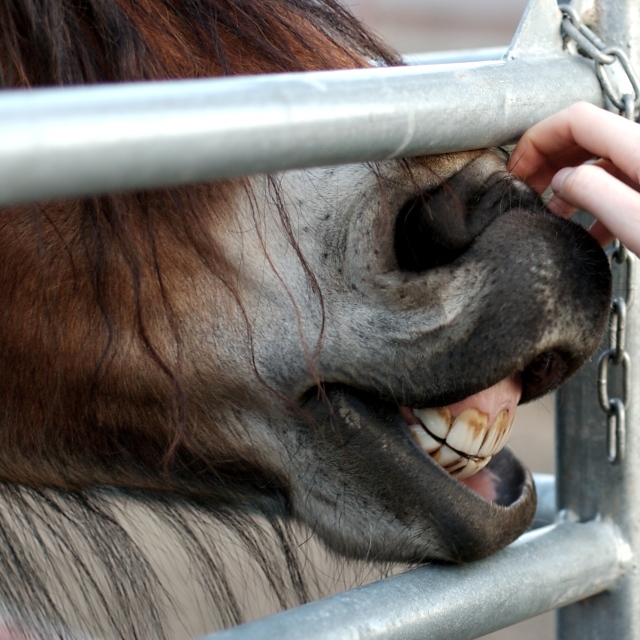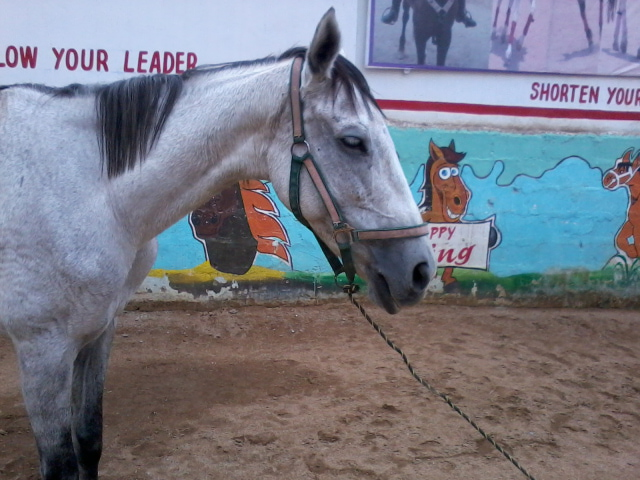QuestionQUESTION: Hi, I have used this bit for years and never had any problems. I don't ride heavy handed. But when people find out that I use this bit, I am shunned. Told that it is the worst bit and very severe. Just want another opinion.
ANSWER: Dear Jennifer,
Oh dear! It never ceases to amaze me how ignorant people can be about the fairly simple physics involved in bits and how they work- also why others insist on offering their opinions (often unsolicited). AS you are aware-ultimately- ANY bit- even the thickest snaffle- can be vicious in the wrong hands. However, like a pair of shoes- no one bit is right for all horses. When you say that you have "used this bit for years" do you mean on the same horse or on multiple horses? While I suppose it is possible that you could have had a number of horses with exactly the same bit requirements- it isn't common.
In any event- I wonder why people feel that it is their place to comment on your choice of bit? If your horse is relaxed, responsive and traveling in frame with this bit- what is their issue?
In any event- there is validity in that a tom thumb can be severe in the wrong hands- it pairs the leverage of a curb with the "nut cracker" action of a broken mouth. What it does allow you to do is to work both sides of the horse independently- so if you have a horse that tends to drop a shoulder- you can "pick up" one side OR the other. As long as you have a light touch and know how to use it- a tom thumb can be an effective bit in the right situation for a particular type of horse. It may be too much bit for many horses and it can create resistance (hollow back and inverted frame)and a tough mouth can result. It tends to generally be used as a training bit to correct a problem rather than a long-term riding bit.
A bit that has similar independent side pick up characteristics but is more forgiving than the tom thumb is a correctional bit- a really well balanced one can be quite expensive but here's an example of one from State line tack for under $20 (http://www.statelinetack.com/item/ss-copper-mouth-western-correction-bit-5in/SLT)
Nonetheless- if YOU and YOUR horse are content with what you have- don't fix what's not broken.
Sincerely,
S. Evans
(Happy New Year!)
---------- FOLLOW-UP ----------
QUESTION: Hi, It may be that I do need to try this correction bit and I would like your opinion. The mare I have is very head strong. Before I bought her, she was mishandled and run on barrels. I have owned her now for 3 years and she is used as a trail horse. I ride by myself. Over the 3 years with constant calm and consistent riding she now can walk and does well on trails. However her other issue is she has separation anxiety from her pasture friend and on our way back to the house she picks up her pace. When I get to our yard she wants to dance all the way back to the hitching post. I am working on this consistently and she is improving. What do you recommend?
Thanks,
Jennifer Church
AnswerDear Jennifer,
Thank you for the clarification of your situation. I wish I were able to give you a magic recipe for success but I am very pleased that you avoided the "run out and get the most severe bit you can find" approach to re-schooling this horse. A strong bit will usually make a strong-headed tough mouthed horse worse- to the point that the last resort is often a mechanical hackamore with a tie down (which of course doesn't actually solve the problem- it just forces the horse into painful submissive control).
Games horses are taught to to one thing consistently- go as fast as they can and headset and frame is of no consequence. Re-schooling these horses is always a challenge and has mixed results depending on how had the horse is, the nature and conformation of the horse and the skill and patience of the trainer.
Sometimes you are not only battling the psychological- but you are also trying to overcome the physical attributes of a horse that has probably been ridden in a tie down which it has pulled against. This develops muscle along the front of the neck- sometimes making the horse actually appear somewhat ewe necked. These horses can be very troublesome to re-school as one has to re build muscle along the topline of the neck.
Anyway= back to you situation. While you might try a correctional out on the trail for safety's sake, I would be taking this horse back to the arena for some long-tern re-schooling. I would go to a fairly thin snaffle (but not a wire- a thin slow twist might do- and a ten ring training martingale (this is basically a circle that goes around he horse's neck and attaches through the front legs like a running martingale but only has rings (five on each side) through which you run your reins, The purpose is to help the rider to maintain maximum action of the bit by keeping the correct angle between the corners of the horse's mouth and he rider's elbow. It also helps to self correct a horse that inverts or tosses its head.
In the ring I would go back to really basic flat work- if possible- work alone this will help to address the separation issue as well. Lunge for ten minutes each way walk, jog and lope before you ride. Begin with walking on contact- soften SLIGHTLY when your horse gives to your hands but do not pitch him away. Western horses have to earn the right to work on light contact or a full drape. He may fight with you but maintain calm gentle contact- very subtle checks and releases will help to set him off a rein if he begins to hang- always accompany a rein aid with leg and seat. Try circles that spiral down (leg yield) and then spiral out. Keep him off of the fence- use the inside track or quarter line this also helps to teach him to think about your leg as the wall - not the fence.
Use lots of variety- changes of direction, serpentines, crosses of the diagonal. Once you are getting some frame and flexion at the walk (and this could take weeks)- then do the same thing at the jog. If he starts to get silly- go back to your walk. Use the wall to reverse and use circles as opposed to getting into a puling contest- try to use changes of direction to help to rate your speed instead of having to always go to your reins. Not until you have soft, framed movement at the walk and the jog should you try the lope. Expect regression- remember this is the gait at which this horse was "over and undered" and taught to run. No straight lines- think circles- and at first- don't try to rate his speed much- just think about quite relaxed transitions and maybe ten strides then down to a jog, let him relax and begin again.
This is going to be a long journey and you do need to know (sadly) that not all games horse can be rehabilitated. If your horse should prove to be one of these remember- you did not create the problem- you just inherited it. As harsh a reality as it may be and as much as you may love this horse- you need to try and intellectualize the situation and remember that there are many, many, really quiet, well schooled and obedient horses out there looking for good homes right now. Perhaps, just perhaps- he may not be the horse for you.
As far as the separation anxiety is concerned- I would leave that issue on the back burner for the time being and try to deal with one fire at a time. Write to me in a couple of months and let me know how things are progressing. Keep your sessions to no more than about 45 minutes- but try to ride four or five days a week.
I hope this is of some help to you. Try to be both patient and realistic about your goals.
Sincerely,
S. Evans

 stifle above the sheath
Question
yearling
hello. i believe that this yea
stifle above the sheath
Question
yearling
hello. i believe that this yea
 horse age
Question
horse age
hello, can you guess the horse age?
horse age
Question
horse age
hello, can you guess the horse age?
 dull coat
Question
pic 1 pic 2
Hi Lisa. Sam here. My
dull coat
Question
pic 1 pic 2
Hi Lisa. Sam here. My
 lunge lines made out of cotton
Question
lunge line cotton lead rope
Hi L
lunge lines made out of cotton
Question
lunge line cotton lead rope
Hi L
 A horse that doesnt like to be around unfamiliar horses
QuestionCruiser
QUESTION: Im 53, I have about a
A horse that doesnt like to be around unfamiliar horses
QuestionCruiser
QUESTION: Im 53, I have about a